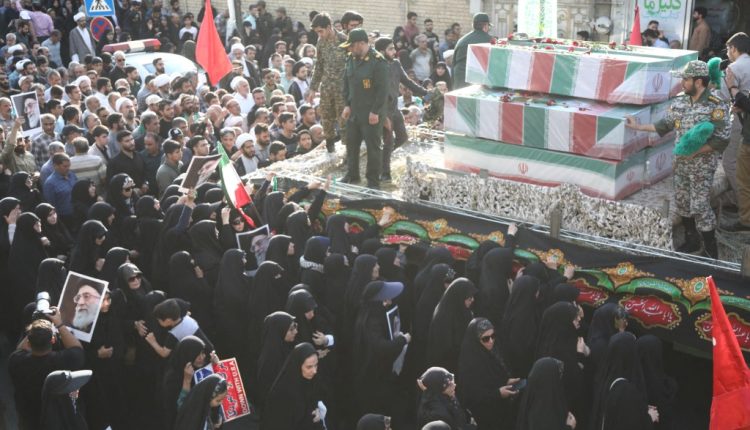Iran… A New Tale of the ‘Cup of Poison’
By Mohammad Sayed Rassas
Israeli Prime Minister Benjamin Netanyahu was surprised during his meeting with U.S. President Donald Trump on 7 April when Trump informed him of his decision to begin negotiations with Iran over its nuclear program the following Saturday. In Netanyahu’s final speech, just hours after the start of the Israeli strike on 13 June, he revealed that the strike had been planned for the end of April, a plan that the New York Times disclosed in its 16 April issue, stating that it had been jointly planned by the U.S. and Israel. After the Israeli strike, Trump mentioned that he was aware of it in advance.
Despite U.S. circles discussing a sixty-day deadline for Tehran to respond to US demands—which aligns with the time span between the start of negotiations and the strike—Trump (seemingly following the logic of negotiating after the fire) invited Tehran to the bargaining table to assess its willingness to be flexible after the new developments.
However, 13 June remains shrouded in many mysteries, especially since 7 April was clarified in the New York Times, which revealed that the US reluctance to strike Iran came after Tulsi Gabbard, the US Director of National Intelligence, confirmed that the planned strike—with Washington playing a central role—could have ignited a full-scale conflict with Iran that the United States wishes to avoid.
What has changed after two months?
The answer can be found in Netanyahu’s recent speech when he said, “In recent years, Iran has developed enough enriched uranium to make nine nuclear bombs. In recent months, it has taken unprecedented steps toward militarizing this enriched uranium, and if we don’t stop it, it will produce a nuclear weapon very soon—in less than a year.”
This likely explains the mystery behind the strike a few days ago, including Netanyahu’s insistence on carrying it out and Washington’s permission for him to do so—so that Israel would not be surprised if its unilateral nuclear stance in the Middle East was broken one day, just as India was by Pakistan in 1998, or as Washington was caught off guard by North Korea’s nuclear test in 2006.
But this also, if we take Netanyahu’s words at face value, suggests that Iran’s move to leap from the nuclear threshold to the bomb is due to its sense of strategic vulnerability after losing its proxies in Gaza and Lebanon in the post-7 October conflicts, and after the fall of the regime of its ally Bashar al-Assad. Becoming a nuclear power would compensate for this, as its strength has been in its proxies rather than in its own military or strategic capacity. Khamenei’s inclination to accept negotiations seems to have been a tactic to buy time. More likely, Trump’s new policy—where he has signaled that the alternative to the nuclear deal is war—is a response to what Netanyahu has revealed. When he withdrew from the Iran nuclear deal in 2018, he pursued only a policy of economic strangulation.
All of the above takes us back to the day Khomeini came to power in February 1979, how he led the Iranian revolution from Paris, and how Washington prevented the Iranian military from repeating the experience of General Zahedi in 1953, when the US struck the government of Prime Minister Mohammad Mossadegh—supported by the Communist Tudeh Party—through a CIA-backed military coup that restored the Shah to power.
In a moment of Soviet expansion in Ethiopia and Afghanistan, then-US President Jimmy Carter and his National Security Adviser Zbigniew Brzezinski—who was Polish-born, an expert on the communist experience, and married to a relative of the Czechoslovakian president overthrown by communists in 1948—thought of using the Iranian cleric against the Kremlin, just as they were considering using the global Sunni fundamentalist Islamic movement in Afghanistan against the communist rulers who came to power in a 1978 military coup, planned by Moscow.
However, Khomeini quickly derailed the US plan at the end of that year by occupying the U.S. embassy in Tehran. Even when the US allowed Iran to be supplied with weapons during the Iran-Iraq War, as revealed in ‘IranGate’ and with Israeli involvement, Tehran remained at odds with Washington. This continued under his successor, Khamenei, from 1989 onward.
When Iranian-American agreements were reached in Afghanistan against the Taliban in 2001 and in Iraq against Saddam Hussein in 2003, Iran used its regional gains to continue its expansionist projects in Lebanon, Palestine, and Yemen, and to consolidate control over the new Iraqi government and to bring Bashar al-Assad under its hegemony. This was accompanied by a uranium enrichment program, which—despite the limits set by Barack Obama in the 2015 agreement—allowed the US to overlook its regional expansion.
If we observe US policy towards Tehran, we find that Trump is the only one who clashed with it in the 21st century, while Bush Jr., Obama, and then Joe Biden have tended to appease it. It seems that 2025 will be the year of the US-Iranian divorce—or the year of collision—unless Khamenei interprets the new realities on the ground and “drinks the cup of poison,” as Khomeini did when he accepted the ceasefire with Iraq in 1988, or as Gamal Abdel Nasser did when he accepted UN Resolution 242 months after the defeat of 1967. That was a prelude to his successor, Anwar Sadat, signing the Camp David Accords after the second military defeat in the 1973 war.
It is likely that the situation will lead Khamenei, willingly or unwillingly—or perhaps after Khamenei’s era—to an Iranian Sadat or Gorbachev, in the context of the post-June 13 confrontation, during which Tehran appears weak and in an unequal position against Israel, with Washington behind it.




Comments are closed.